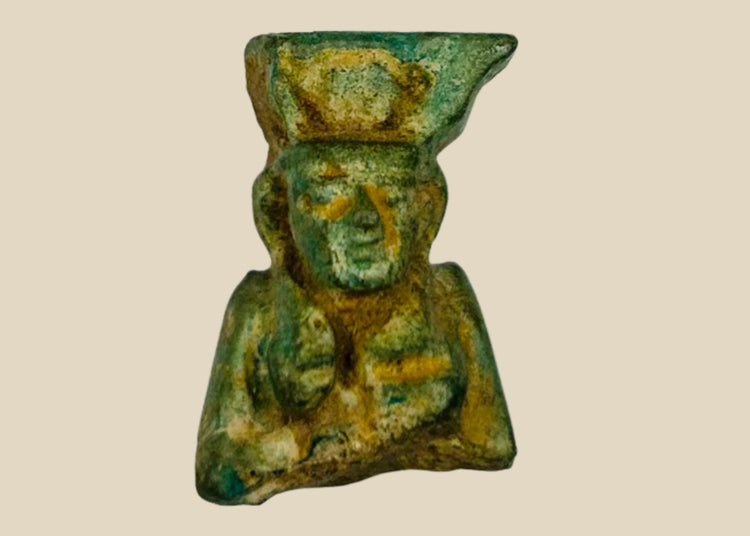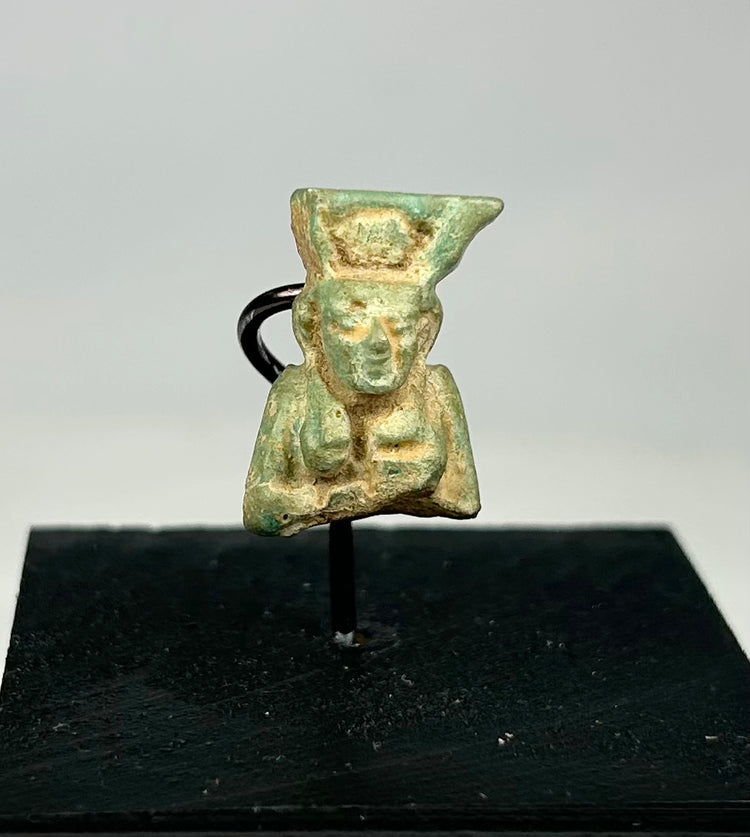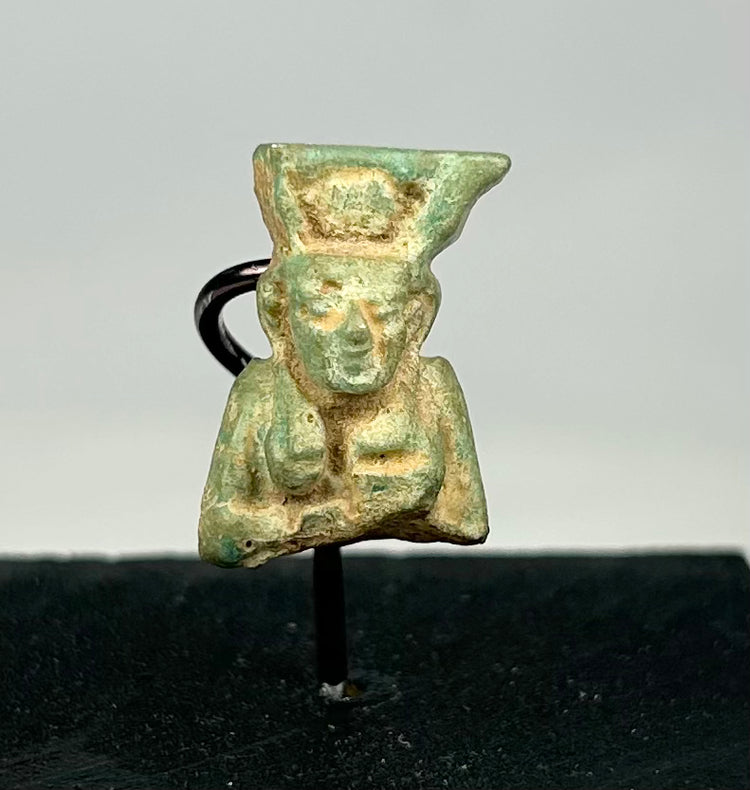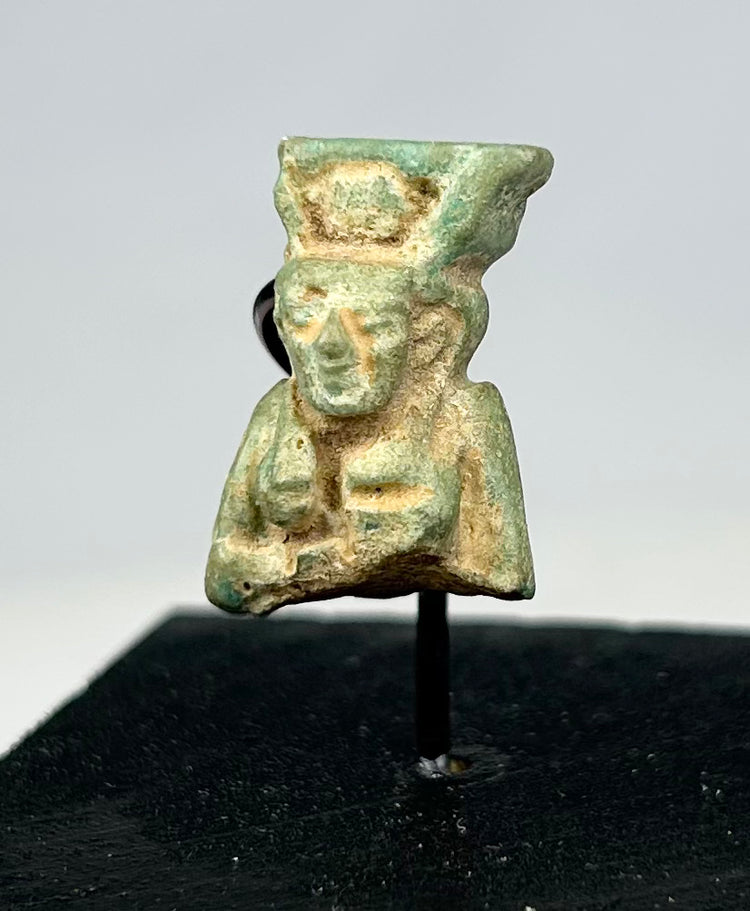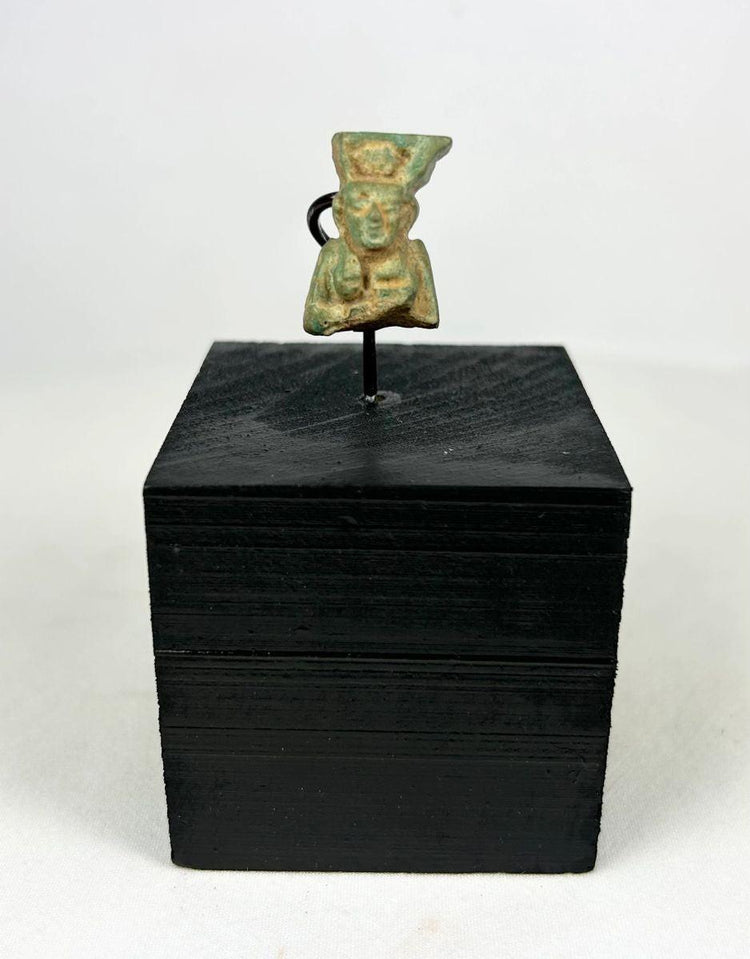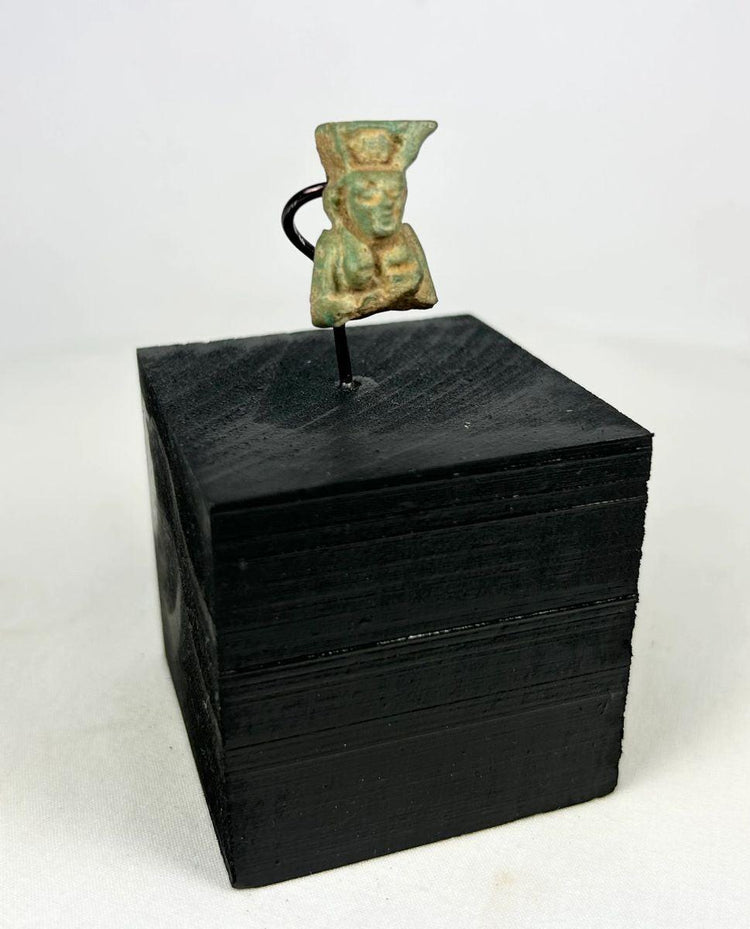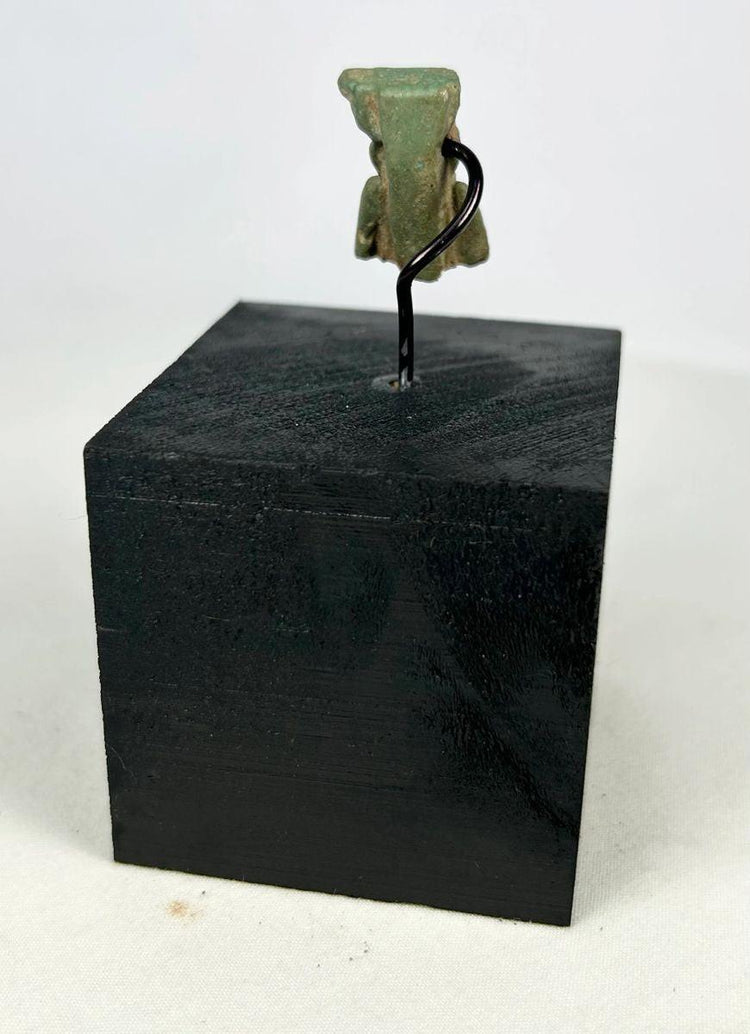Ancient Egyptian Protective Amulet | Faience Sekhmet with Bluish-Green Glaze | Circa 1070–664 BCE
Description
More
Less
Historical Context & Origin
Region: Egypt, likely Lower Egypt or Thebes
Material: Glazed faience
Period: Third Intermediate Period, circa 1070–664 BCE
Description
This miniature amulet depicts the lion-headed goddess Sekhmet, one of the most powerful and complex deities of ancient Egypt, associated with war, divine protection, and healing. Molded in pale blue-green faience, the figure is shown frontally, with a stylized tripartite wig and traces of a broad headdress or crown indicating her divine status. Her arms are positioned against her chest in a gesture of authority or reverence. The lower portion of the body has been lost to time, but the facial features remain strongly defined. A suspension hole on the reverse suggests that this piece was originally worn as a protective charm or affixed to linen wrappings in a funerary context. The glaze has aged to a soft greenish hue, consistent with long burial.
Features
- Molded faience figure of Sekhmet with distinct lionine facial features
- Stylized tripartite wig and traces of crown detail
- Suspension hole for wearing or funerary use
- Soft bluish-green glaze with natural surface pitting from age
- Mounted on a black wood and wire display stand
Cultural Significance
Amulets of Sekhmet were particularly favored for their dual symbolism: the goddess could both unleash destruction and provide healing and protection. Objects like this were commonly worn by the living as safeguards against illness and malevolent forces, or placed with the deceased as funerary provisions to ensure divine guardianship in the afterlife.
Condition
Fragmentary. Lower portion of body missing with expected edge wear and burial encrustation. Glaze remains partially intact with stable surface degradation. No modern restorations observed.
Dimensions (approximate)
Height (including stand): 3.5 in
Width: 2 in
Age
Circa 1070–664 BCE
Description
Historical Context & Origin
Region: Egypt, likely Lower Egypt or Thebes
Material: Glazed faience
Period: Third Intermediate Period, circa 1070–664 BCE
Description
This miniature amulet depicts the lion-headed goddess Sekhmet, one of the most powerful and complex deities of ancient Egypt, associated with war, divine protection, and healing. Molded in pale blue-green faience, the figure is shown frontally, with a stylized tripartite wig and traces of a broad headdress or crown indicating her divine status. Her arms are positioned against her chest in a gesture of authority or reverence. The lower portion of the body has been lost to time, but the facial features remain strongly defined. A suspension hole on the reverse suggests that this piece was originally worn as a protective charm or affixed to linen wrappings in a funerary context. The glaze has aged to a soft greenish hue, consistent with long burial.
Features
- Molded faience figure of Sekhmet with distinct lionine facial features
- Stylized tripartite wig and traces of crown detail
- Suspension hole for wearing or funerary use
- Soft bluish-green glaze with natural surface pitting from age
- Mounted on a black wood and wire display stand
Cultural Significance
Amulets of Sekhmet were particularly favored for their dual symbolism: the goddess could both unleash destruction and provide healing and protection. Objects like this were commonly worn by the living as safeguards against illness and malevolent forces, or placed with the deceased as funerary provisions to ensure divine guardianship in the afterlife.
Condition
Fragmentary. Lower portion of body missing with expected edge wear and burial encrustation. Glaze remains partially intact with stable surface degradation. No modern restorations observed.
Dimensions (approximate)
Height (including stand): 3.5 in
Width: 2 in
Age
Circa 1070–664 BCE
You May Also Like
























